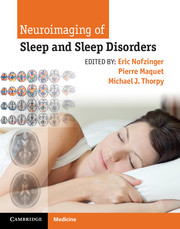Book contents
- Neuroimaging of Sleep and Sleep Disorders
- Neuroimaging of Sleep and Sleep Disorders
- Copyright page
- Contents
- Contributors
- Foreword
- Preface
- Section 1 Introduction
- Section 2 Neuroimaging of wakefulness and sleep
- Section 3 Neuroimaging, sleep loss, and circadian misalignment
- Chapter 16 Functional neuroimaging of sleep deprivation
- Chapter 17 Neuroimaging of attention and alteration of processing capacity in sleep-deprived persons
- Chapter 18 Economic decision-making and the sleep-deprived brain
- Chapter 19 Functional imaging of inter-individual differences in response to sleep deprivation
- Chapter 20 Neuroimaging the interaction between circadian and homeostatic processes
- Chapter 21 Neuroimaging the effects of light on non-visual brain functions
- Section 4 Sleep and memory
- Section 5 Neuroimaging of sleep disorders
- Index
Chapter 16 - Functional neuroimaging of sleep deprivation
from Section 3 - Neuroimaging, sleep loss, and circadian misalignment
Published online by Cambridge University Press: 05 March 2013
- Neuroimaging of Sleep and Sleep Disorders
- Neuroimaging of Sleep and Sleep Disorders
- Copyright page
- Contents
- Contributors
- Foreword
- Preface
- Section 1 Introduction
- Section 2 Neuroimaging of wakefulness and sleep
- Section 3 Neuroimaging, sleep loss, and circadian misalignment
- Chapter 16 Functional neuroimaging of sleep deprivation
- Chapter 17 Neuroimaging of attention and alteration of processing capacity in sleep-deprived persons
- Chapter 18 Economic decision-making and the sleep-deprived brain
- Chapter 19 Functional imaging of inter-individual differences in response to sleep deprivation
- Chapter 20 Neuroimaging the interaction between circadian and homeostatic processes
- Chapter 21 Neuroimaging the effects of light on non-visual brain functions
- Section 4 Sleep and memory
- Section 5 Neuroimaging of sleep disorders
- Index
Summary
Keywords
- Type
- Chapter
- Information
- Neuroimaging of Sleep and Sleep Disorders , pp. 129 - 136Publisher: Cambridge University PressPrint publication year: 2013

